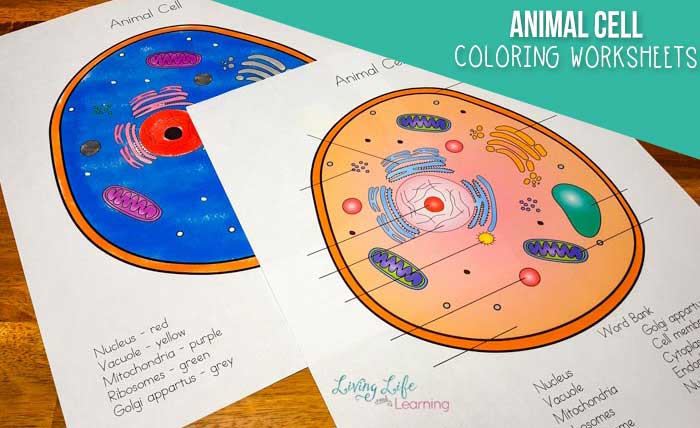Coloring Worksheet Activities: Animal Cell Chapter 7.3 Coloring Worksheet

Animal cell chapter 7.3 coloring worksheet – Right, so Chapter 7.3’s all about animal cells, innit? And what better way to get your head around all those teeny tiny organelles than with a wicked coloring worksheet? It’s not just about making it look all pretty; it’s a proper learning tool, bruv.This worksheet’s gonna be ace for getting to grips with the different parts of an animal cell and where they all hang out.
We’ll have each organelle clearly labeled, and you can use different colours to make it pop. Think of it like a super-detailed map of a cell – you’ll know exactly where everything is and what it does. It’s a proper game-changer for remembering all the bits and bobs.
Worksheet Design and Organelle Focus, Animal cell chapter 7.3 coloring worksheet
The worksheet will feature a large, simplified diagram of an animal cell. Each organelle – the nucleus, mitochondria, ribosomes, endoplasmic reticulum, Golgi apparatus, lysosomes, and cell membrane – will be clearly Artikeld and labeled. There’ll be a space next to each organelle for a brief description of its function, keeping it simple and snappy, you know? Think short, punchy sentences, not essays.
We’ll also include a small key to help match colours to organelles, making it super easy to follow. This visual representation helps cement the information in your memory – much better than just reading about it, right?
Incorporating the Worksheet into Lesson Plans
This coloring worksheet isn’t just a one-trick pony; it can be used in loads of different ways, depending on how you learn best.
- Visual Learners: For visual learners, the worksheet itself is the main event. They can spend time carefully colouring and labelling each organelle, reinforcing the visual association between the name and the structure. This method allows them to process the information visually and create a memorable image of the cell.
- Kinesthetic Learners: Kinesthetic learners learn by doing. For them, we could add a small activity after colouring. Maybe they could build a 3D model of the cell using playdough or other craft materials, matching the colours to their worksheet. This gets them physically involved and reinforces the learning through a different sensory experience.
- Auditory Learners: Even auditory learners can benefit! Before they start colouring, we could have a short quiz on the organelles and their functions. Then, as they colour, they can verbally describe each organelle and its function, solidifying the information through both visual and auditory channels. This combines the visual learning of the worksheet with the auditory reinforcement of verbal description.
Visualisation and Memory Enhancement
The simple act of colouring helps students to visualise the cell’s structure and the location of its organelles. By actively engaging with the diagram, they’re not passively absorbing information; they’re actively constructing a mental model of the cell. The different colours assigned to each organelle further enhance memory retention. It’s like creating a mental “colour-coded” map of the cell, making it much easier to recall the information later.
This active engagement is far more effective than simply reading a textbook description, making it a proper memory boost.
Mastering the intricacies of the animal cell chapter 7.3 coloring worksheet can be a journey! Imagine the vibrant organelles, each playing its vital role, much like the diverse creatures of the African savanna. For a burst of color inspiration, check out these fantastic african animal coloring pages printable , then return to your microscopic world, ready to paint the nucleus, mitochondria, and more with newfound artistic flair.
The vibrant colors will help solidify your understanding of animal cell structures.












